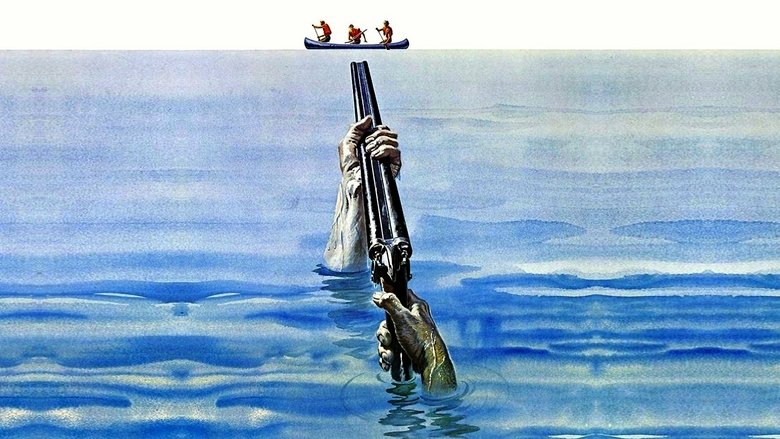← Back to Reviews

in

Chances are that even if you have never seen Deliverance, you are at least familiar with some aspects of the film. The famous "Dueling Banjos" scene, for instance, is easily recognizable in pop culture today. I'm not entirely sure why Deliverance has recently gained such a cult following. Perhaps it actually is the "Dueling Banjos" scene, or maybe the movie simply speaks to a variety of people in different ways.
Regardless, there's no denying the brilliance of Deliverance, not only as a fine example of storytelling, but also as a technical achievement. The film was shot chronologically, and as mentioned in cast and crew interviews, those involved dreaded filming some of its now-infamous scenes. That being said, Deliverance is a great film for sure, and a nail-biting survival movie, but it also has some unbelievably dark moments that turn it nightmarish.
It appears as if Deliverance is the dream project of director John Boorman, for Boorman has not only made an exceptional film, but his style defines Deliverance from beginning to end, turning the movie into a chaotic mess that works perfectly within the situation the four protagonists find themselves in. Boorman leaves the audience never quite sure of what is really happening.
The concept of Deliverance - man versus nature, man versus man, nature versus man combined into a seamless whole - works so well that at times everything feels too realistic. The idea that this, or something similar, could be happening right now makes one feel uneasy. Perhaps this is Boorman's doing - there are many ways that Deliverance could have been filmed - and he chose an appropriate style of forcing the audience to watch the protagonists suffer the worst in order for their struggle to seem freakishly authentic.
One line that sticks with me from this movie would be, "You can't beat this river." Boorman understands that true terror comes from normal people being thrown into horrifying situations. And he uses this to his advantage, mixing his unique cloudy storytelling with the real world. But there's also an eerie sense of beauty, and in some cases, calm, as if the events that unfold onscreen are merely the natural order of things, which is far more frightening than the story of a serial killer wearing a hockey mask or a psychotic machete-wielding, shack-occupying backwoods hunter.
Deliverance (1972)
Director: John Boorman
Starring: Jon Voight, Burt Reynolds, Ned Beatty
Director: John Boorman
Starring: Jon Voight, Burt Reynolds, Ned Beatty

Chances are that even if you have never seen Deliverance, you are at least familiar with some aspects of the film. The famous "Dueling Banjos" scene, for instance, is easily recognizable in pop culture today. I'm not entirely sure why Deliverance has recently gained such a cult following. Perhaps it actually is the "Dueling Banjos" scene, or maybe the movie simply speaks to a variety of people in different ways.
Regardless, there's no denying the brilliance of Deliverance, not only as a fine example of storytelling, but also as a technical achievement. The film was shot chronologically, and as mentioned in cast and crew interviews, those involved dreaded filming some of its now-infamous scenes. That being said, Deliverance is a great film for sure, and a nail-biting survival movie, but it also has some unbelievably dark moments that turn it nightmarish.
It appears as if Deliverance is the dream project of director John Boorman, for Boorman has not only made an exceptional film, but his style defines Deliverance from beginning to end, turning the movie into a chaotic mess that works perfectly within the situation the four protagonists find themselves in. Boorman leaves the audience never quite sure of what is really happening.
The concept of Deliverance - man versus nature, man versus man, nature versus man combined into a seamless whole - works so well that at times everything feels too realistic. The idea that this, or something similar, could be happening right now makes one feel uneasy. Perhaps this is Boorman's doing - there are many ways that Deliverance could have been filmed - and he chose an appropriate style of forcing the audience to watch the protagonists suffer the worst in order for their struggle to seem freakishly authentic.
One line that sticks with me from this movie would be, "You can't beat this river." Boorman understands that true terror comes from normal people being thrown into horrifying situations. And he uses this to his advantage, mixing his unique cloudy storytelling with the real world. But there's also an eerie sense of beauty, and in some cases, calm, as if the events that unfold onscreen are merely the natural order of things, which is far more frightening than the story of a serial killer wearing a hockey mask or a psychotic machete-wielding, shack-occupying backwoods hunter.
